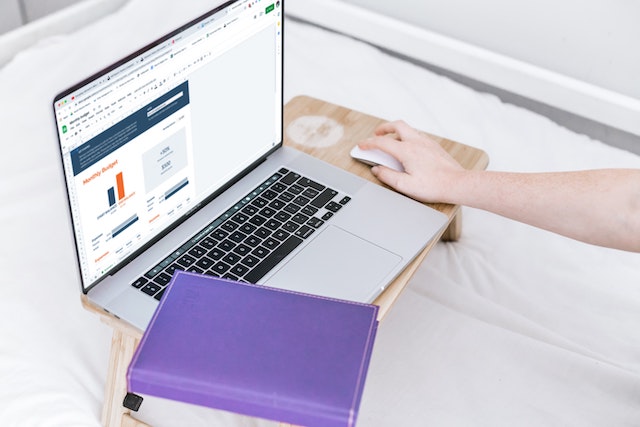Saving money is one of the most difficult things to do—especially these days. With inflation at a three-year high, everyone is tightening their belts and trying to keep their wallets as closed as possible.
It’s important to recognize that saving money itself is a privilege. Not everyone can afford to save—literally. Saving money isn’t just about financial responsibility, it’s also about economic status. A considerable amount of Filipinos live paycheck to paycheck, and even more live below the poverty line. Taxes on certain goods are also expected to rise, which means saving can be even harder for some people now.
President Ferdinand Marcos Jr. pushes for the adjustment of the country's tax system to include digital service providers. #2022SONA
— Inquirer (@inquirerdotnet) July 25, 2022
Visit https://t.co/5Auvu4GsOu for our full coverage.
READ: https://t.co/mE4vF3aPaM pic.twitter.com/OgxbO9s5VP
But for those of us who are in a financial position to save, there are many ways to do it. It’s not just about dropping spare change in piggy banks anymore. There are different savings methods for different types of lifestyles. Choosing the best one for you means taking an honest look at your financial situation, goals, and where you want to in the future.
Here are a few different savings methods that might be right for you.
50/30/20
The 50/30/20 method combines both saving and budgeting. Basically, you take the lump sum of your income and split it into 50 percent, 30 percent, and 20 percent.
The 50 percent is for your necessary expenses like bills, insurance payments, and household needs. The 30 percent is your discretionary spending fund. Think of it like an allowance. This is the money you can spend on things like coffee, eating out, and shopping. The remaining 20 percent is for your savings.

You can set whatever goal you like for your savings, but for newbies, it’s best to start an emergency fund that covers at least three months worth of expenses if anything happens. If you’ve already got that covered, you can move on to other financial goals like saving up for a car, a house, or anything else.
If these specific figures aren’t working for you, you can change the percentages up to meet your needs.
10 percent method
The 10 percent saving method is probably the most straightforward way to save. Every payday, you just have to set aside 10 percent of your income and put it towards your savings. This method usually works for people who can’t save much but still want to put something away for rainy days.

The key to making this work is consistency. Before anything else, make sure you calculate 10 percent of your income to know how much you’ll be saving. Online banking apps have an auto-debit feature that allows you to schedule money transfers. Other banking apps even have a savings feature that you can schedule, too.
Cash stuffing
Cash stuffing is the rebrand of an old budgeting technique: envelope stuffing. This method gained a lot of popularity over TikTok, with videos under the tag garnering millions of views.
Instead of using your online bank account or ATM card to save, this method uses cash only. You start by assigning categories in your life that require spending, like groceries, electricity bills, water bills, hobbies, shopping, trips, savings, and anything else you need a budget for. Each category gets an envelope that you have to fill with cash as a budget.
@expensense.ph How I do Budgeting using Cash Envelopes➡️ CASH STUFFING💸 #cashenvelopestuffing #cashenvelopesystem #budgeting #financial #fy #fyp #fypシ ♬ Warm cute relax Lo-Fi – Gloveity
These days, most people no longer use envelopes, but specialized binders to hold their money. It’s a visual way of budgeting and saving that allows you to physically see your money versus just swiping or tapping away using cards.
This method can be especially useful for people who have trouble sticking to a budget, because whatever you have in that envelope is the only money you can spend on a specific category.
Kakeibo
Kakeibo is a Japanese method of budgeting and saving money. It translates directly to “household financial ledger,” which means you’ll need to physically list down your expenses to keep track of them. You start by writing down your income, fixed expenses, and savings goals in that order. After your savings goal, you have to list down ways you can reach it.
For example, you’re trying to beef up your emergency fund. You can write down ways to cut down on other expenses in order to reroute them to your savings. So instead of ordering a meal from a delivery service, you can decide to cook at home instead. The money you save from this can be transferred to your emergency savings fund and so on.

Then, you have to divide your spending into four categories or “pillars,” which are survival, culture, optional, and extra. The survival category is for your basic necessities like bills, groceries, and medicine. The culture category is where going to museums, movies, concerts, or anything culture-related that can incur expense. Optional is for your wants, like shopping, vacations, and eating out. The extra category is for emergency costs, like if you need to get something repaired or replaced.
The important thing about this method is that you have to list down all of your expenses—to the last cent. This teaches you how to track where your money is going and be more responsible for your financial future.
You can always set up an Excel sheet, but physically writing the figures down on paper makes it more real.











































